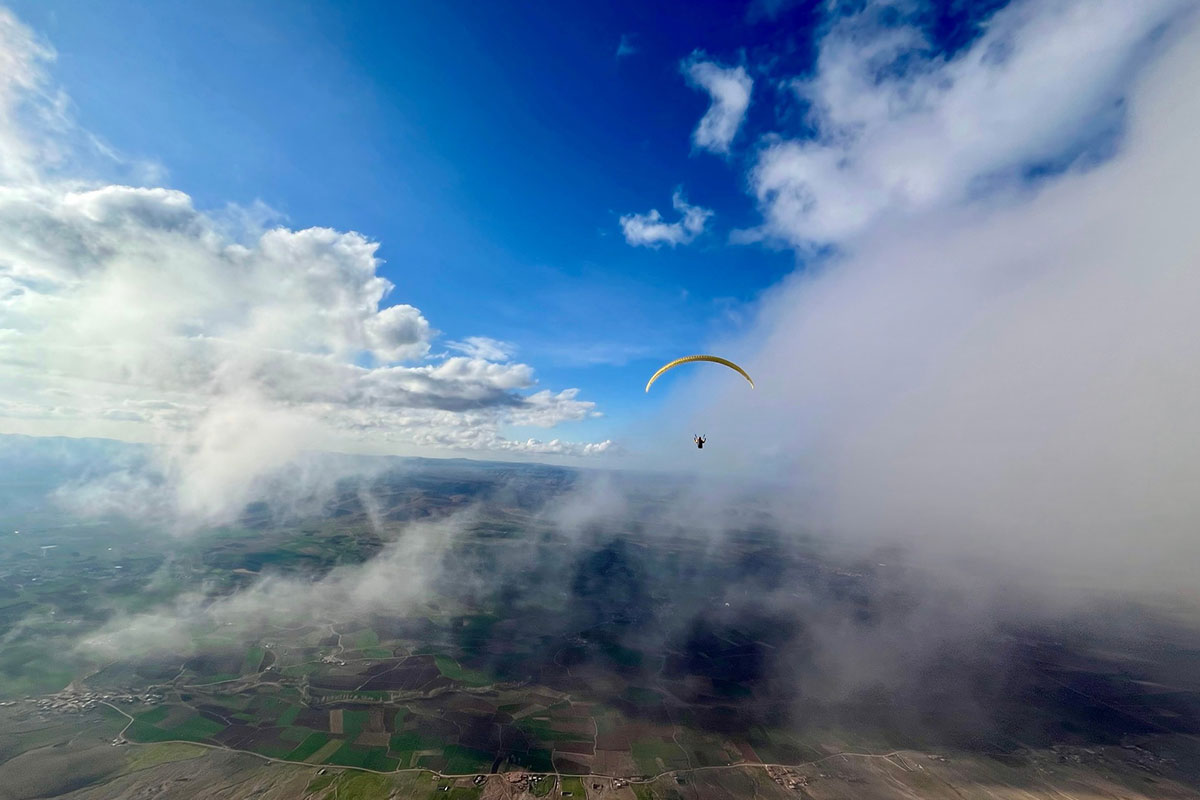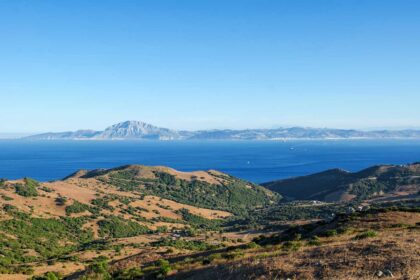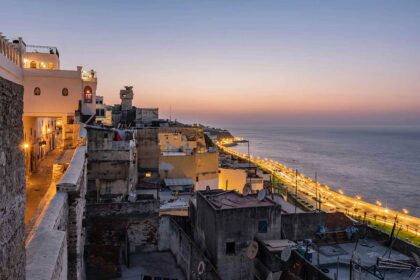Morocco offers paragliding enthusiasts an extraordinary playground where rugged Atlas Mountains meet the sweeping Atlantic coastline. This North African gem has quickly become a premier destination for pilots seeking diverse flying conditions, reliable thermals, and breathtaking landscapes that stretch from snow-capped peaks to golden beaches.
Whether you’re a seasoned pilot or taking your first tandem flight, Morocco’s unique geography provides perfect conditions for aerial adventures. The country’s reliable coastal winds, mountain thermals, and year-round flying opportunities make it an ideal choice for paragliding enthusiasts from around the world. This comprehensive guide will walk you through Morocco’s best paragliding locations, planning essentials, safety considerations, and insider tips to make your flying experience unforgettable.
From the surf town vibes of Taghazout to the high-altitude challenges of Oukaïmeden, you’ll discover everything needed to plan your perfect paragliding adventure in this captivating country.
Best Paragliding Locations in Morocco
Boulemane & Bouiblane
Nestled in the Middle Atlas Mountains, Boulemane and Bouiblane offer exceptional mountain flying experiences that challenge and reward experienced pilots. These locations provide thermal flying conditions with stunning views across rolling hills and traditional Berber villages.
The area’s unique topography creates excellent lift conditions, particularly during spring and autumn months when thermal activity peaks between 11 AM and 4 PM. Local pilots report consistent thermals reaching 3,000-4,000 meters above sea level, making it perfect for cross-country flights and altitude gains.
CLUB CRÊT ATLAS, the region’s premier paragliding organization, provides local expertise and flight guidance for visiting pilots. They offer valuable insights into weather patterns, launch sites, and safety protocols specific to mountain flying in this region. The club organizes regular flying meets and can connect international visitors with local pilots familiar with the terrain.
Wind conditions here favor morning launches, with thermal development typically beginning around 10 AM. Evening flights are possible but require careful attention to changing weather patterns as mountain valleys can create unpredictable downdrafts after sunset.
Taghazout
This laid-back surf town has evolved into Morocco’s paragliding hotspot, where Atlantic coastal cliffs provide perfect launch points for spectacular ocean flights. Taghazout’s consistent onshore winds create ideal conditions for both beginners and experienced pilots, with multiple launch sites offering varying difficulty levels.
The coastal location means flying conditions remain relatively stable throughout the day, with sea breezes picking up around midday and continuing until evening. Pilots can expect smooth, predictable flights with opportunities for coastal soaring along the dramatic clifflines that stretch for miles in both directions.
Several local schools operate from Taghazout, including Paragliding Morocco and other certified operators offering tandem flights, beginner courses, and equipment rental. These schools provide certified instructors who understand local conditions and can guide pilots through the unique challenges of coastal flying.
Launch sites near Taghazout offer spectacular views of the Atlantic Ocean, Argan forests, and the distant Atlas Mountains. The area’s reliable winds and forgiving landing zones make it perfect for pilots looking to build confidence in coastal flying conditions.
Essaouira
Known for its consistent winds and long-distance flight potential, Essaouira stands out as Morocco’s most reliable paragliding destination. The historic port city’s unique geography creates steady coastal winds that can sustain flights for hours, making it popular among cross-country enthusiasts and pilots seeking extended air time.
The landscape around Essaouira combines coastal cliffs, inland plains, and scattered forests, providing diverse scenery and multiple route options. Pilots regularly achieve flights exceeding 50 kilometers along the coast, taking advantage of the consistent thermal and ridge lift conditions.
Popular launch zones include the cliffs north of the city and several inland sites that catch morning thermals. Landing options are abundant, with large beach areas and open fields providing safe options for pilots of all skill levels. The city’s famous ramparts and bustling medina create stunning backdrops for aerial photography.
Local wind patterns favor afternoon flying, with conditions typically strengthening around 1 PM and remaining stable until late evening. The area’s predictable weather patterns make flight planning straightforward, though pilots should always check with local operators for current conditions.
Atlas Mountains (Imlil and Surrounding Areas)
The High Atlas Mountains around Imlil provide Morocco’s most challenging and rewarding mountain paragliding experiences. Home to North Africa’s highest peaks, including Mount Toubkal, this region offers high-altitude flying with breathtaking views of snow-capped summits and traditional mountain villages.
Mountain flying here requires advanced skills and careful weather assessment, as conditions can change rapidly with altitude and terrain features. Thermal activity typically begins later in the day compared to coastal areas, with best conditions occurring between noon and 5 PM during warmer months.
Seasonal considerations are crucial for Atlas Mountain paragliding. Spring and autumn offer the most stable conditions, while summer brings strong thermals that can challenge even experienced pilots. Winter flying is possible at lower elevations, though snow cover limits launch site accessibility.
Accommodation options in Imlil and nearby villages cater to adventure travelers, with many guesthouses offering storage for paragliding equipment and local knowledge about flying conditions. The area’s established trekking infrastructure makes it relatively easy to access remote launch sites with proper planning.
Oukaïmeden
As one of Africa’s highest ski resorts, Oukaïmeden transforms into a unique high-altitude paragliding destination during warmer months. Flying at elevations exceeding 2,600 meters presents both opportunities and challenges that attract experienced mountain pilots.
The thin air at this altitude affects both pilot performance and glider behavior, requiring adjustments to flying technique and equipment setup. However, the exceptional visibility and dramatic mountain scenery make Oukaïmeden worth the extra preparation required for safe high-altitude flying.
Safety considerations include acclimatization time, weather monitoring, and emergency planning. The remote location means rescue operations can be complicated, so pilots should never fly alone and must maintain communication with ground support.
Local attractions near Oukaïmeden include traditional Berber villages, ancient rock carvings, and hiking trails that provide alternative activities when flying conditions aren’t suitable. The area’s rich cultural heritage adds depth to any paragliding adventure.
Planning Your Paragliding Trip to Morocco
When to Visit
Morocco’s diverse geography creates multiple flying seasons depending on your chosen location and flying preferences. Understanding regional weather patterns helps optimize your trip timing for the best possible conditions.
Spring (March-May) offers excellent conditions across all regions, with stable weather, moderate winds, and comfortable temperatures. This season provides the most predictable flying conditions and is ideal for pilots wanting to explore multiple locations during a single trip.
Autumn (September-November) presents similar advantages to spring, with the added benefit of warm sea temperatures for coastal flying locations. Atlantic coastal areas maintain excellent conditions well into November, while mountain regions offer crisp, clear flying days.
Summer (June-August) brings intense heat to inland areas but maintains good coastal conditions. Taghazout and Essaouira remain flyable, though pilots should plan for early morning or late afternoon sessions to avoid midday heat.
Winter (December-February) limits mountain flying due to snow and cold temperatures but keeps coastal areas active. Experienced pilots can find good conditions along the Atlantic coast, though weather systems become less predictable.
What to Pack
Packing for Morocco paragliding requires consideration of diverse climates and varying altitude conditions. Essential gear varies significantly between coastal and mountain flying locations.
Equipment Essentials:
- Complete paragliding system (wing, harness, reserve)
- Helmet meeting international safety standards
- GPS device with Morocco map data
- Radio for communication with ground crew
- Altimeter and variometer for mountain flying
Clothing for Coastal Areas:
- Lightweight flying suit or wind-resistant layers
- UV protection clothing for extended sun exposure
- Comfortable walking shoes for launch site access
- Hat and sunglasses for ground handling
Mountain Flying Additions:
- Warm layers for high-altitude conditions
- Insulated gloves for cold-weather flying
- Sturdy hiking boots for mountain launch access
- Emergency shelter and signaling devices
Beginners should consider local equipment rental options, as many schools provide complete gear packages. Experienced pilots may prefer bringing familiar equipment but should research airline baggage policies for sporting equipment transport.
How to Get There and Around
Morocco’s excellent transportation infrastructure makes accessing paragliding sites relatively straightforward, though planning varies significantly between coastal and mountain destinations.
Major Airports:
- Marrakech (RAK) – Best access to Atlas Mountains and Essaouira
- Agadir (AGA) – Closest to Taghazout and southern coastal sites
- Casablanca (CMN) – Main international hub with connecting flights
Transportation Between Sites: Rental cars provide maximum flexibility for equipment transport and accessing remote launch sites. Major international rental companies operate from all airports, though booking in advance ensures availability during peak seasons.
Public transportation reaches major towns, but accessing specific launch sites often requires private transport. Many paragliding schools offer shuttle services or can arrange local transport for equipment and pilots.
Equipment Considerations: Airlines generally accept paragliding equipment as sporting goods, though size and weight restrictions apply. Check specific airline policies before booking, as fees and handling procedures vary between carriers.
Local equipment rental eliminates transport challenges and allows trying different gear suited to Moroccan conditions. Many schools maintain high-quality equipment that’s regularly inspected and updated.
Guided Paragliding Tours
Professional guided tours offer structured approaches to experiencing Morocco’s diverse paragliding opportunities while maximizing safety and local knowledge. These tours benefit pilots unfamiliar with Moroccan flying conditions or those seeking comprehensive experiences across multiple locations.
Advantages of Professional Tours: Guided tours provide local expertise, equipment support, weather monitoring, and emergency backup that independent travel cannot match. Professional guides understand regional conditions, safety protocols, and cultural considerations that enhance both safety and enjoyment.
Most tour operators maintain relationships with local authorities, ensuring proper permits and regulatory compliance. They also provide ground support, transportation, and accommodation arrangements that allow pilots to focus entirely on flying.
Sample 10-Day Morocco Paragliding Itinerary:
| Day | Location | Activities | Accommodation |
|---|---|---|---|
| 1-2 | Marrakech/Imlil | Arrival, acclimatization flights | Mountain lodge |
| 3-4 | Atlas Mountains | High-altitude flying, cross-country | Traditional riad |
| 5-6 | Essaouira | Coastal flying, long-distance attempts | Seaside hotel |
| 7-8 | Taghazout | Beach flying, surf culture | Surf lodge |
| 9-10 | Return/Reserve | Weather backup, departure | Airport hotel |
Group vs. Private Experiences: Group tours offer social interaction, shared costs, and varied skill level learning opportunities. Private tours provide customized itineraries, flexible scheduling, and personalized instruction suited to specific pilot goals and experience levels.
Many operators offer hybrid approaches, combining group activities with private instruction or custom route planning based on individual preferences and weather conditions.
Safety and Regulations
Local Flying Rules and Permits
Morocco maintains specific regulations governing paragliding activities, though enforcement and requirements vary between regions. Understanding legal requirements prevents complications and ensures safe, authorized flying.
Current Regulatory Framework: Foreign pilots can generally fly in Morocco without specific permits for recreational activities, though commercial operations require proper licensing. However, certain areas near airports, military installations, or protected zones maintain flight restrictions that pilots must respect.
Local flying clubs and schools maintain current information about restricted areas and temporary flight limitations. Consulting with established operators before flying ensures compliance with current regulations and helps identify any recent changes to flight rules.
Documentation Requirements: International pilots should carry valid pilot licenses, insurance documentation, and equipment certification records. While not always checked, having proper documentation prevents potential complications if questioned by authorities.
Some locations require registration with local authorities or flying clubs before launching. This process typically involves simple paperwork and helps authorities track pilot activities for safety purposes.
Safety Tips for Flying in Morocco
Morocco’s diverse flying conditions require careful preparation and ongoing risk assessment. Understanding local hazards and emergency procedures significantly improves safety margins for visiting pilots.
Weather Awareness: Moroccan weather patterns can change rapidly, particularly in mountain regions where afternoon thunderstorms develop quickly during warmer months. Coastal areas generally offer more stable conditions but can experience sudden wind shifts when weather systems move through.
Morning weather briefings, either through local operators or online resources, provide crucial information for daily flight planning. Many experienced local pilots use WhatsApp groups or social media to share real-time condition updates.
Mountain Flying Risks: High-altitude flying in the Atlas Mountains requires experience with mountain meteorology, terrain assessment, and emergency procedures. Downdrafts, rotor effects, and rapidly changing conditions can challenge even experienced pilots.
Always inform someone of flight plans and expected return times when flying in remote mountain areas. Carry emergency communication devices and know local rescue contact information.
Coastal Flying Considerations: Sea breezes create generally predictable conditions but can produce turbulence near cliffs and headlands. Tide changes affect landing zone accessibility on some beaches, requiring careful timing for coastal flights.
Water landings present serious risks due to cold Atlantic temperatures and potential currents. Plan flight paths that maintain safe gliding distance to suitable landing areas at all times.
Insurance and Emergency Contacts: Comprehensive travel insurance should include paragliding coverage, as standard policies often exclude aviation activities. Specialized sports insurance provides better coverage for equipment and emergency medical situations.
Emergency contact information should include local emergency services (190), nearest medical facilities, and embassy or consular contacts for international visitors.
FAQs About Paragliding in Morocco
What is the best time of year for paragliding in Morocco? Spring (March-May) and autumn (September-November) offer the most consistent conditions across all regions. Coastal areas like Taghazout and Essaouira remain flyable year-round, while mountain regions are best avoided during winter months due to snow and unpredictable weather.
Do I need to bring my own paragliding equipment? Not necessarily. Many schools and operators in Taghazout, Essaouira, and other popular areas offer rental equipment including wings, harnesses, and safety gear. However, experienced pilots often prefer bringing familiar equipment, particularly helmets and instruments.
Are there paragliding schools for beginners in Morocco? Yes, several certified schools operate in major paragliding areas, particularly around Taghazout and Essaouira. These schools offer complete beginner courses, tandem flights, and progressive training programs. Most instructors speak multiple languages including English and French.
What are the safety risks involved in paragliding here? Main risks include rapidly changing mountain weather, coastal wind shifts, and challenging terrain for emergency landings in some areas. Proper training, weather awareness, and flying with experienced local guides significantly reduce these risks.
Is it possible to paraglide year-round in Morocco? Coastal locations like Taghazout and Essaouira offer year-round flying opportunities, though summer months can be very hot and winter brings occasional storms. Mountain areas are seasonal, with best conditions from March through November.
How much does it cost to learn paragliding in Morocco? Complete beginner courses typically range from $800-1,500 USD depending on location and course length. Tandem flights cost $80-150 USD, while daily equipment rental runs $50-80 USD. Costs are generally lower than European equivalents.
Can I combine paragliding with other adventure sports on this trip? Absolutely! Morocco offers excellent opportunities to combine paragliding with surfing (especially in Taghazout), hiking in the Atlas Mountains, desert tours, and cultural experiences. Many tour operators offer multi-sport packages.
Are there any legal requirements or permits for paragliding in Morocco? Recreational flying generally doesn’t require special permits, though pilots should carry valid licenses and insurance. Some areas have restrictions near airports or military zones. Local schools and clubs provide current information about any regulatory requirements.
Morocco stands as an exceptional paragliding destination that combines reliable flying conditions with stunning natural beauty and rich cultural experiences. From the consistent coastal winds of Taghazout and Essaouira to the challenging high-altitude flights of the Atlas Mountains, this North African kingdom offers something for every level of pilot. The country’s year-round flying opportunities, affordable costs, and welcoming local paragliding community make it an ideal choice for both first-time visitors and returning enthusiasts.
Success in Moroccan paragliding comes down to proper preparation, respect for local conditions, and choosing appropriate locations for your skill level. Whether you’re seeking your first tandem flight over the Atlantic coast or planning cross-country adventures through mountain valleys, Morocco’s diverse landscapes and reliable conditions will create memories that last a lifetime. Pack your gear, study the weather, and prepare for an aerial adventure that perfectly blends the thrill of flight with the magic of Morocco.














